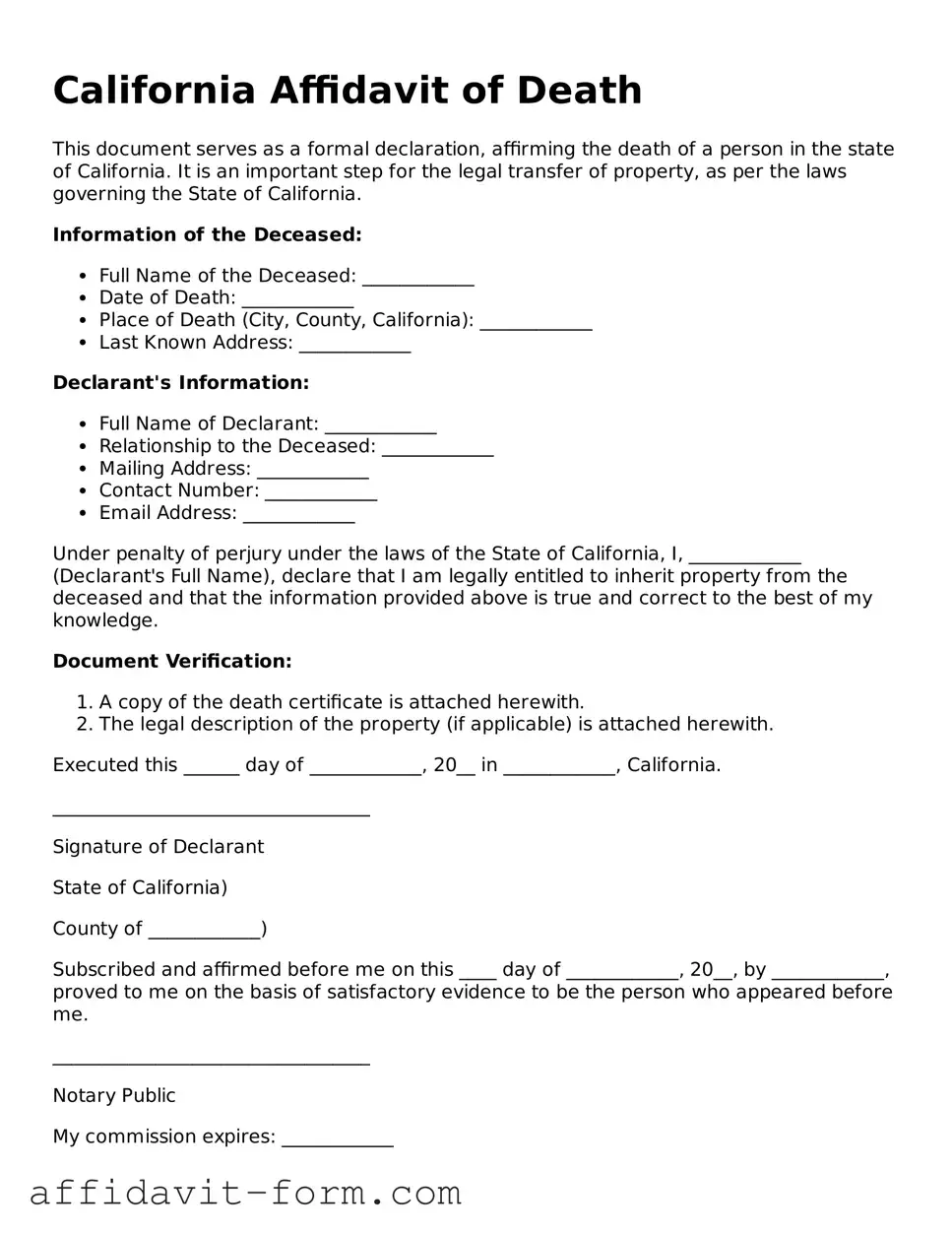California Affidavit of Death
This document serves as a formal declaration, affirming the death of a person in the state of California. It is an important step for the legal transfer of property, as per the laws governing the State of California.
Information of the Deceased:
- Full Name of the Deceased: ____________
- Date of Death: ____________
- Place of Death (City, County, California): ____________
- Last Known Address: ____________
Declarant's Information:
- Full Name of Declarant: ____________
- Relationship to the Deceased: ____________
- Mailing Address: ____________
- Contact Number: ____________
- Email Address: ____________
Under penalty of perjury under the laws of the State of California, I, ____________ (Declarant's Full Name), declare that I am legally entitled to inherit property from the deceased and that the information provided above is true and correct to the best of my knowledge.
Document Verification:
- A copy of the death certificate is attached herewith.
- The legal description of the property (if applicable) is attached herewith.
Executed this ______ day of ____________, 20__ in ____________, California.
__________________________________
Signature of Declarant
State of California)
County of ____________)
Subscribed and affirmed before me on this ____ day of ____________, 20__, by ____________, proved to me on the basis of satisfactory evidence to be the person who appeared before me.
__________________________________
Notary Public
My commission expires: ____________
